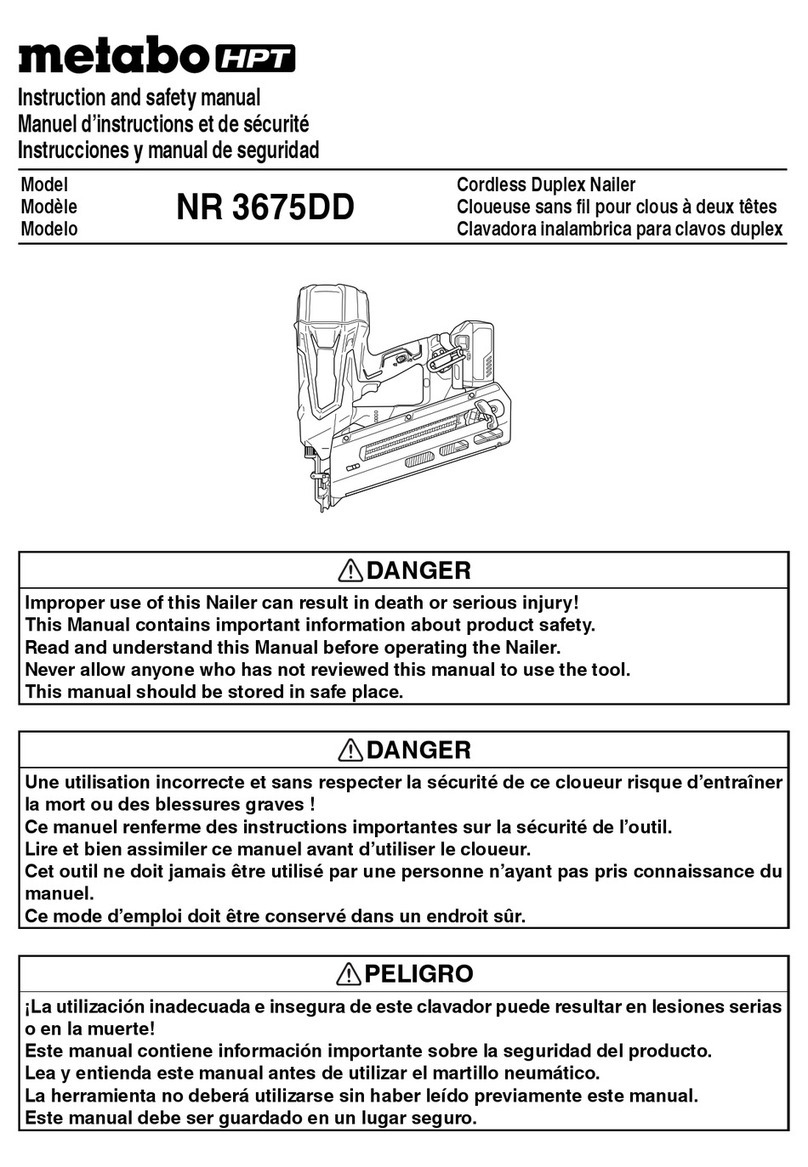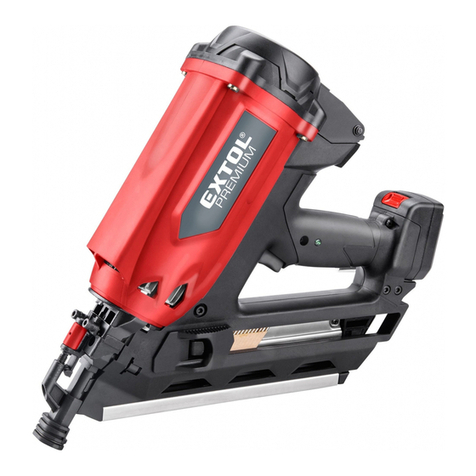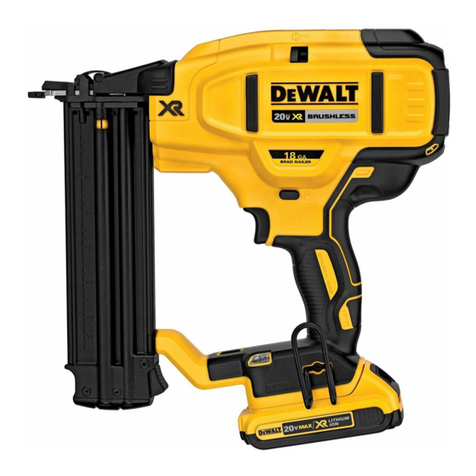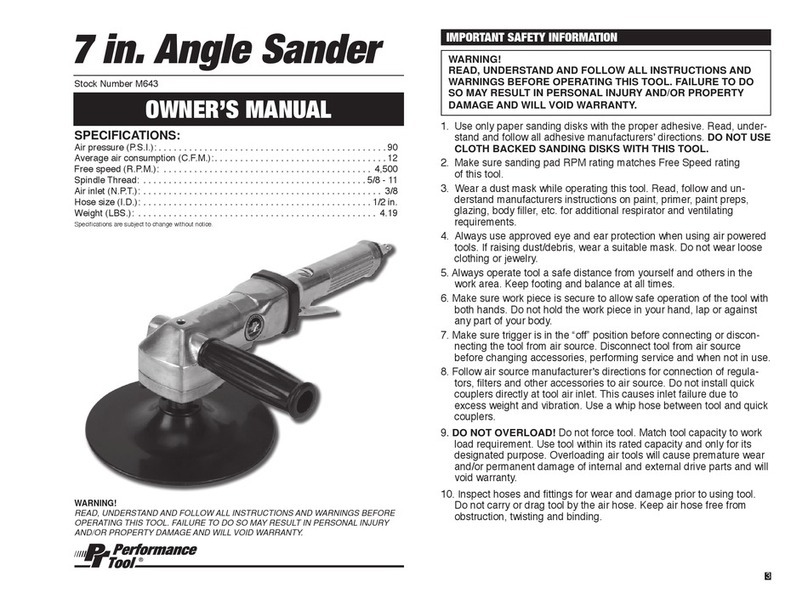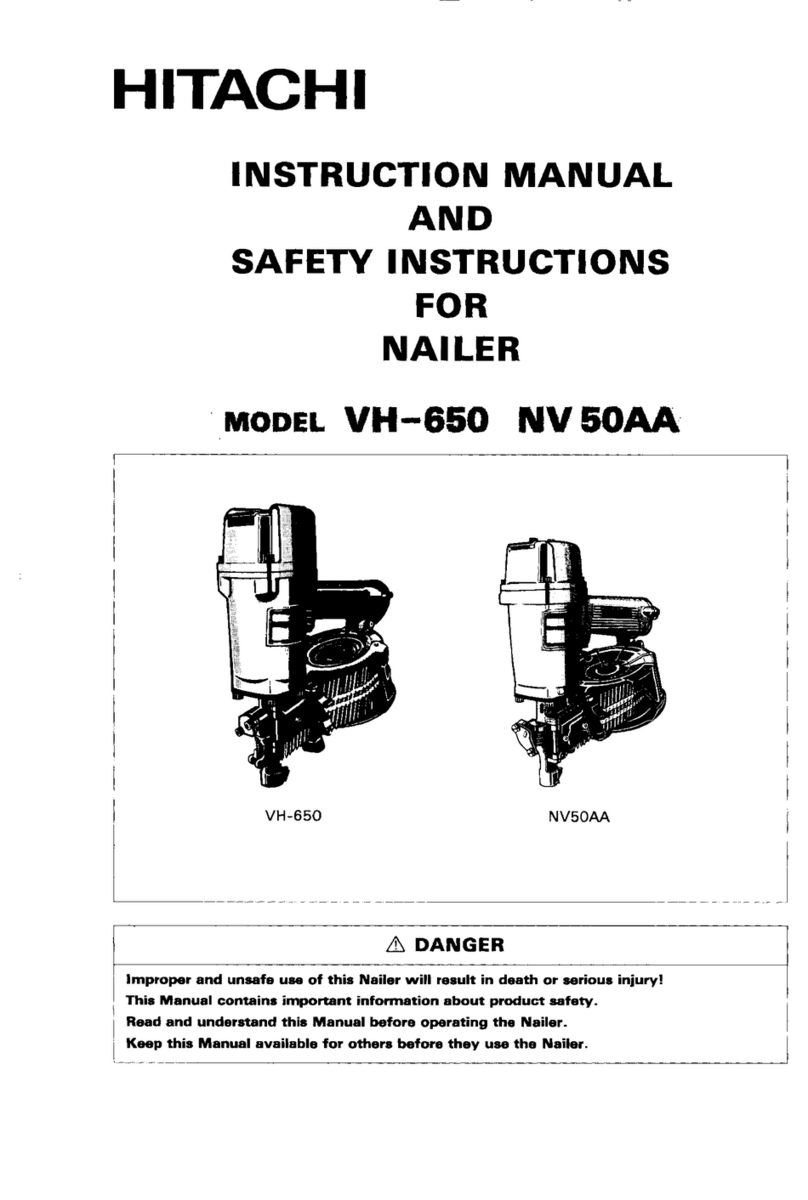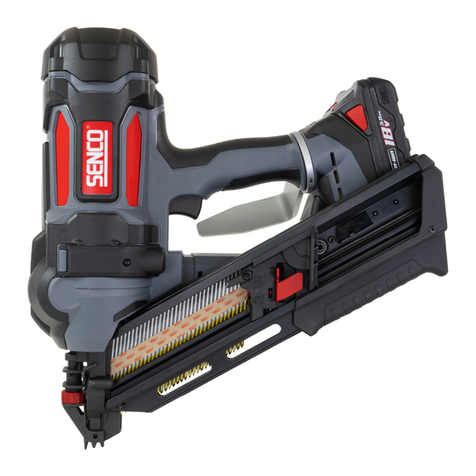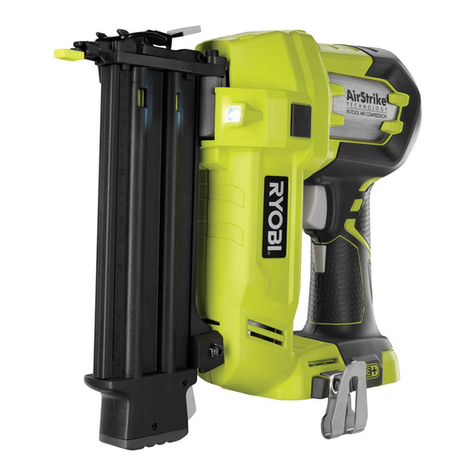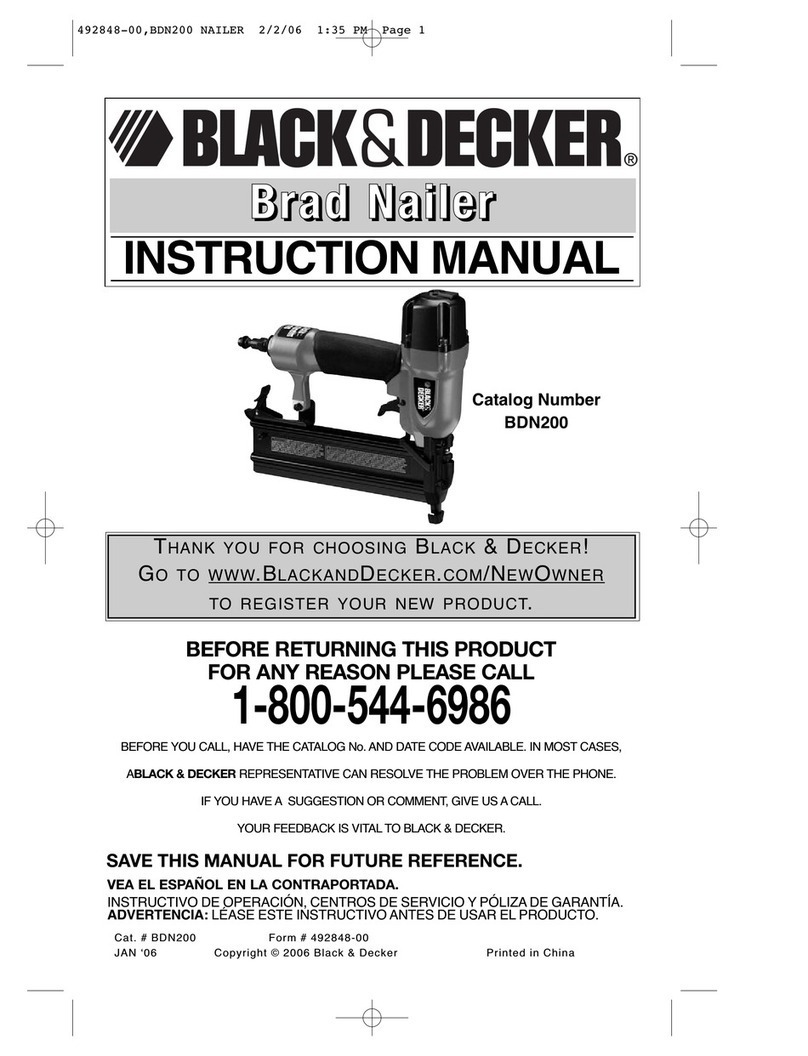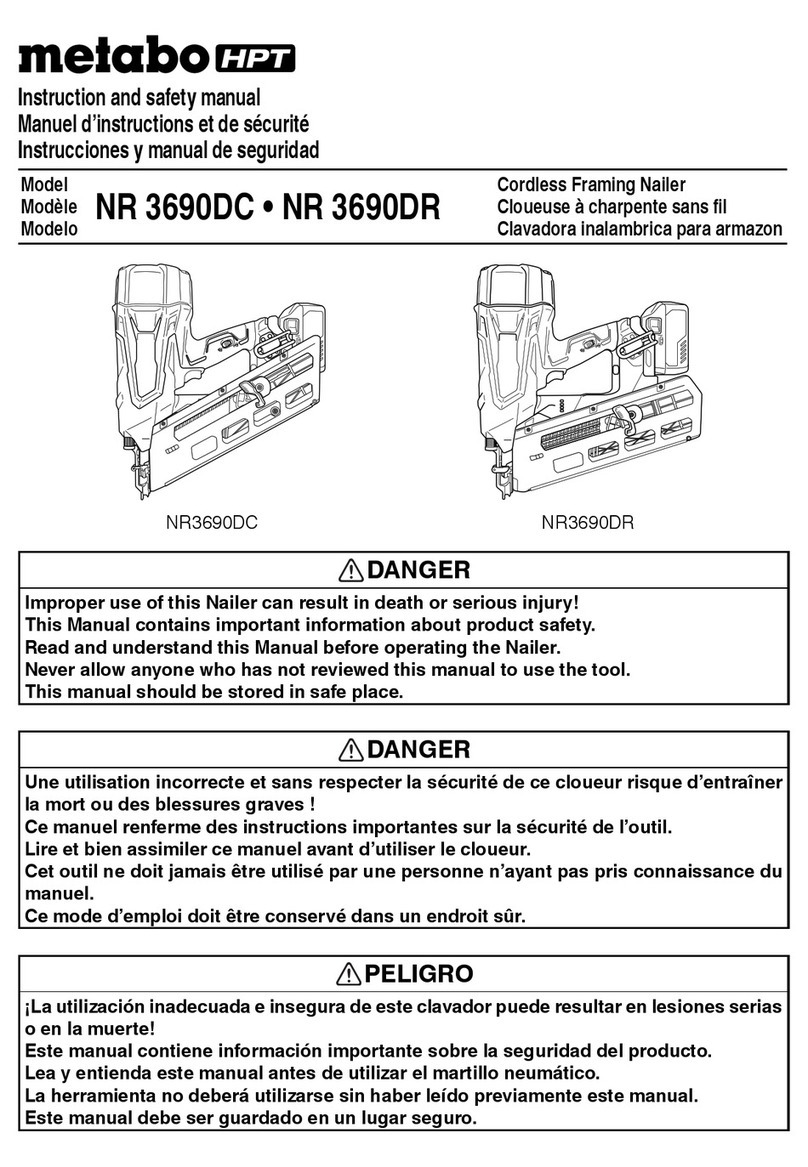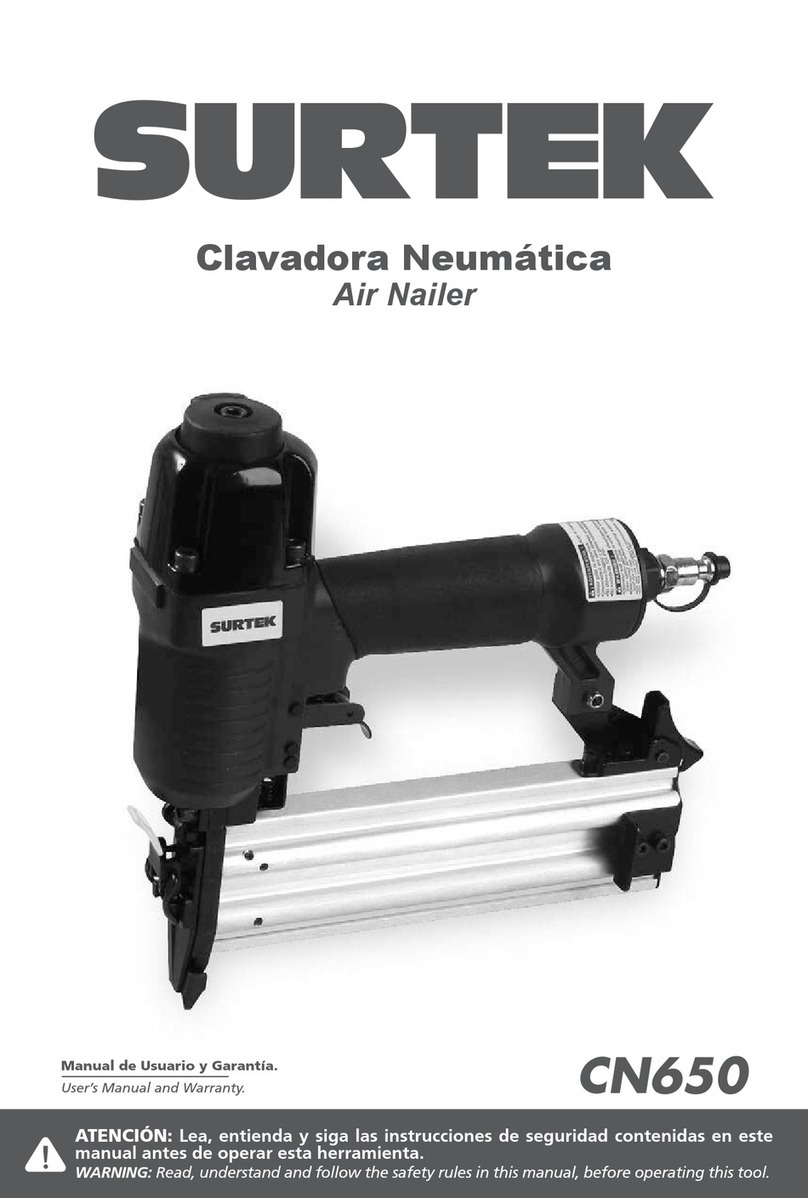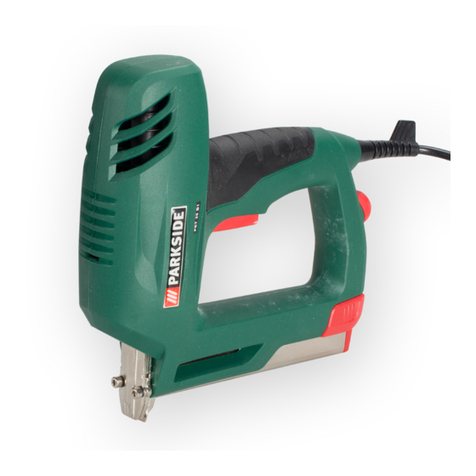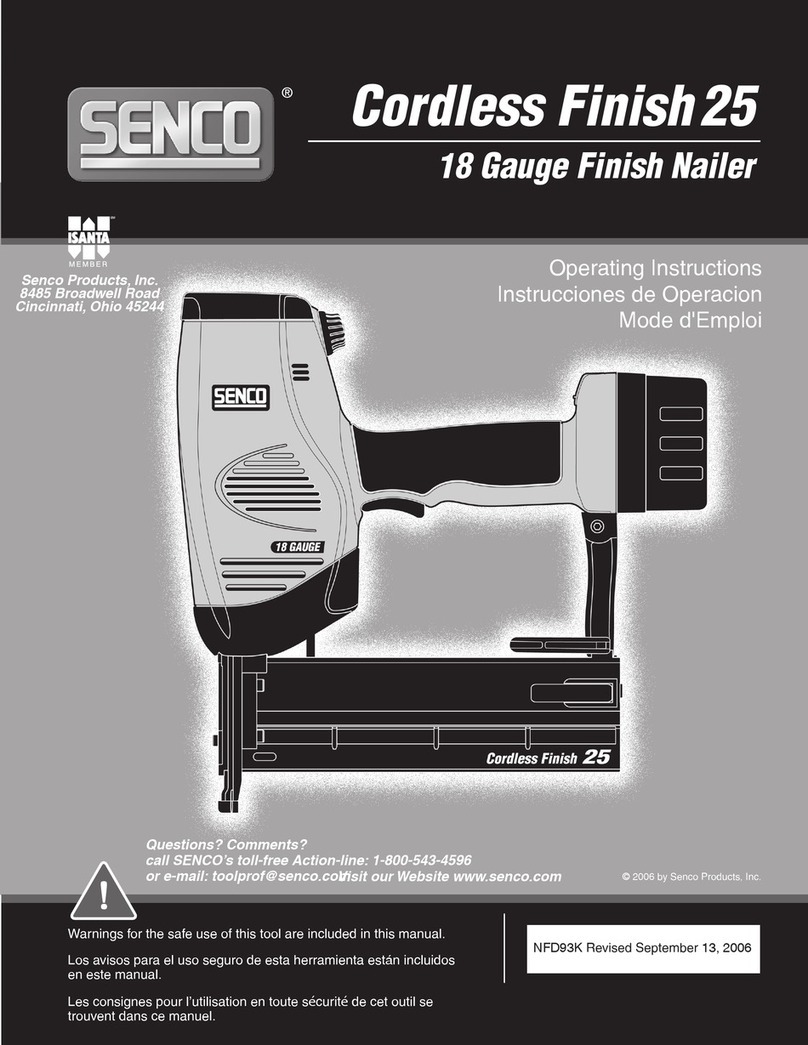2 of 4
PERSONAL SAFETY
· Stay alert, watchwhat you aredoing and usecommon sense whenoperating a
pneumatic tool. Donot use apneumatic tool whileyou are tiredor under theinfluence
of drugs, alcoholor medication.Amoment of inattentionwhile operating pneumatictools
may result inserious personal injury.
· Dress properly. Do notwear loose clothingof jewelry. Keep yourhair, clothingand
gloves away frommoving parts.Loose clothes, jewelryor long haircan be caughtin
moving parts.Air vents oftencover moving partsand should beavoided.
· Always use theappropriate eye andear protection andother safety equipment.
Safety equipment suchas dust mask,non-skid safety shoes,and a hardhatused for
appropriate conditions willreduce personal injuries.
· Avoid accidentalstarting. Disconnect toolfrom air supplywhen not inuse, and
when carrying toolto another workarea.
· Do not overreach.Keep proper footingand balance atall times.This enablesbetter
control of thepneumatic tool inunexpected situations.
TOOL USEAND CARE
· Never use bottledgas, such asoxygen or anyother combustible gases,as a
pneumatic source forthis tool.Danger of explosionand serious personalinjury may
result.
· Do not connectpneumatic tool tocompressed air inwhich the pressureexceeds
120 PSI.
· Use air hosesrated for safeoperation of thetool. Air hosesrated for amaximum of
150 PSI orgreater must beused with thistool.
· Do not forcethe pneumatic tooland use thetool only forits intended use.Do not
discharge fasteners intoopen air,concrete, stone, hardwoods,knots or anymaterial
too hard forthe fastener topenetrate. Do notuse the bodyof the toolor top capas a
hammer.Discharged fasteners maycause injury.
· Do not drivefasteners near edgeof material.The workpiecemay split causingthe
fastener to ricochet.Be aware thenail may followthe grain ofthe wood, causingit to
protrude unexpectedly fromthe side ofthe work material.
· Do not drivenails blindly intowalls, floors, orother work areas.Fasteners driven into
live electrical wires,plumbing, or othertypes of obstructionscan result ininjury.
· Be aware thatnails can bedriven completely throughthing or verysoft work
material. Make sure thepressure in thecompressor is suchthat nails areset into the
material and notpushed completely through.
· Do not drivenails onto theheads of otherfasteners. Strong recoil, jammedfasteners,
or ricocheted nailsmay result.
· Disconnect pneumatic toolfrom the airsupply before makingany adjustments,
performing maintenance, clearingjammed fasteners, orstoring.
· Secure work withclamps or avise in orderto keep handsand body outof potential
harm. Be sure theworkpiece is properlysecure before pressingthe tool againstthe
material.
· Keep face andbody parts awayfrom back ofthe tool capwhen working inrestricted
areas. Sudden recoil canresult in impactto the body, especially whennailing into hardor
dense material.
· Store idle pneumatictools out ofthe reach ofchildren and donot allow persons
unfamiliar with thepneumatic tool orthese instructions tooperate the pneumatictool.
Pneumatic tools aredangerous in thehands of untrainedusers.
· Maintain pneumatic tools.Before each usecheck for misalignmentor binding of
moving parts, breakageof parts, damagedair hose andany other conditionthat may
affect the pneumatictools operation. Ifdamaged, have thetool repaired beforeuse.
Many accidents arecaused by poorlymaintained pneumatic tools.
· Keep handle dry, clean, andfree from oiland grease.
· Make sure thehose is freeof obstructions orsnags. Entangled hoses cancause loss
of balance orfooting.
